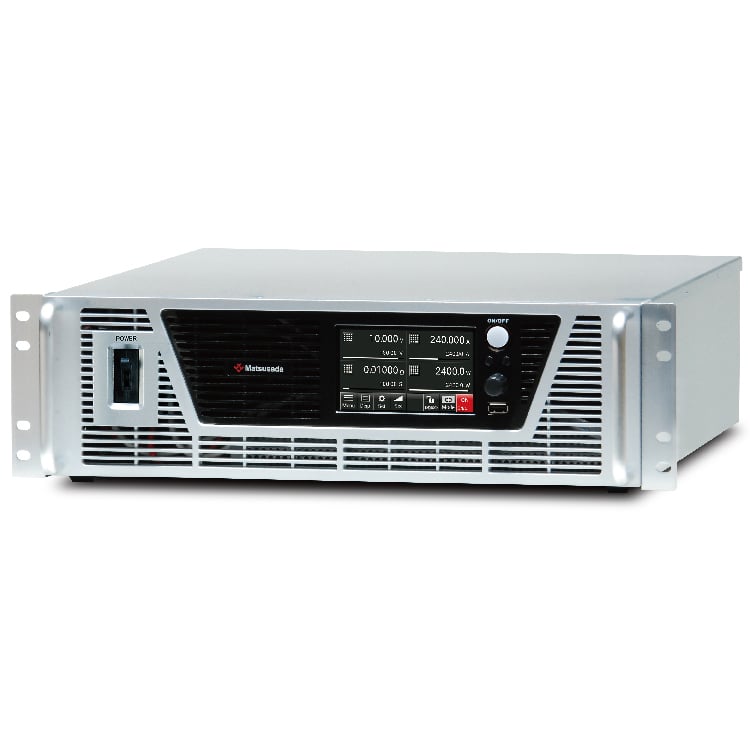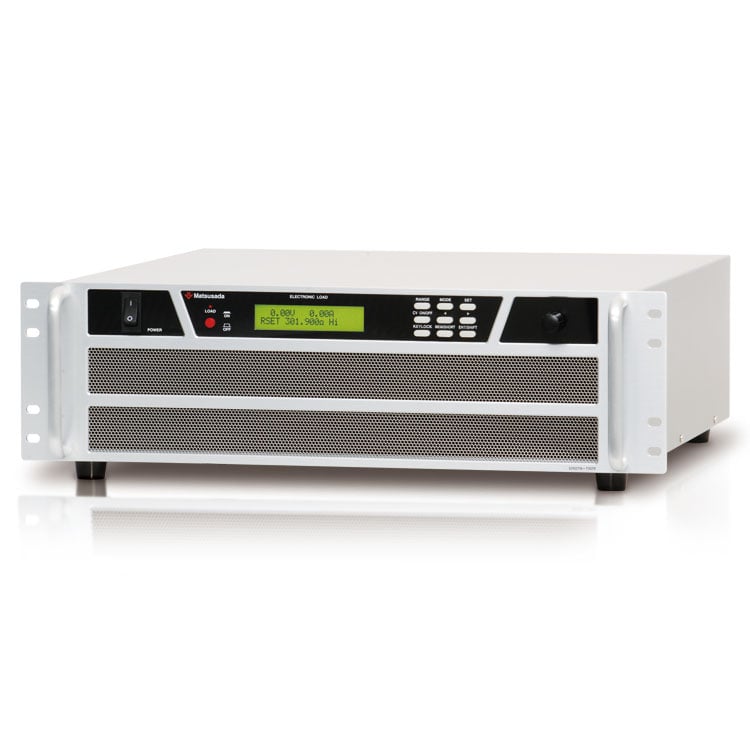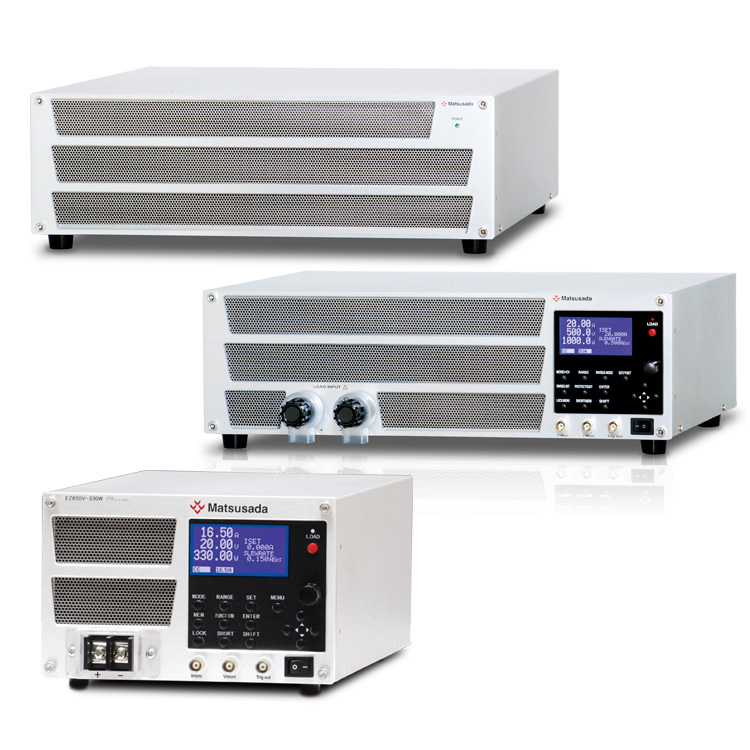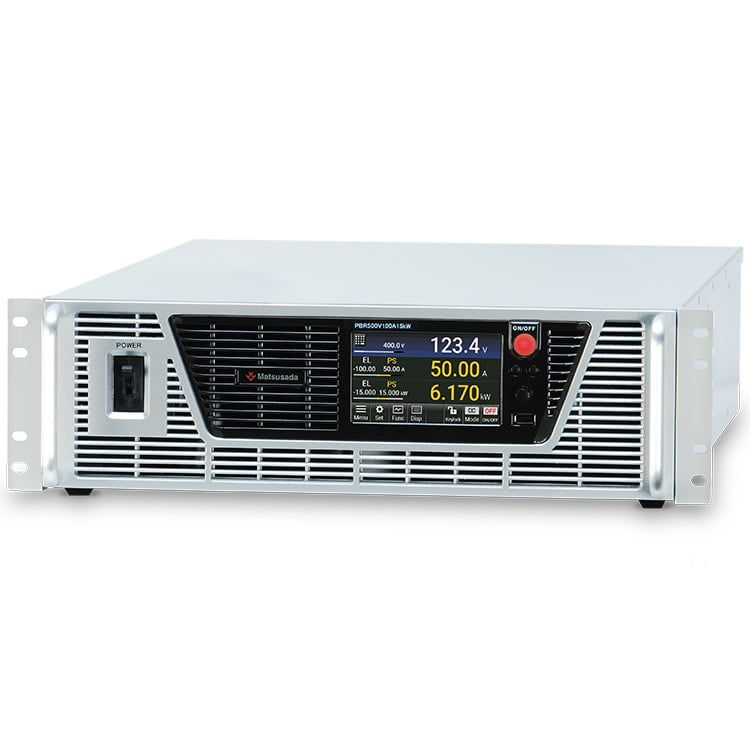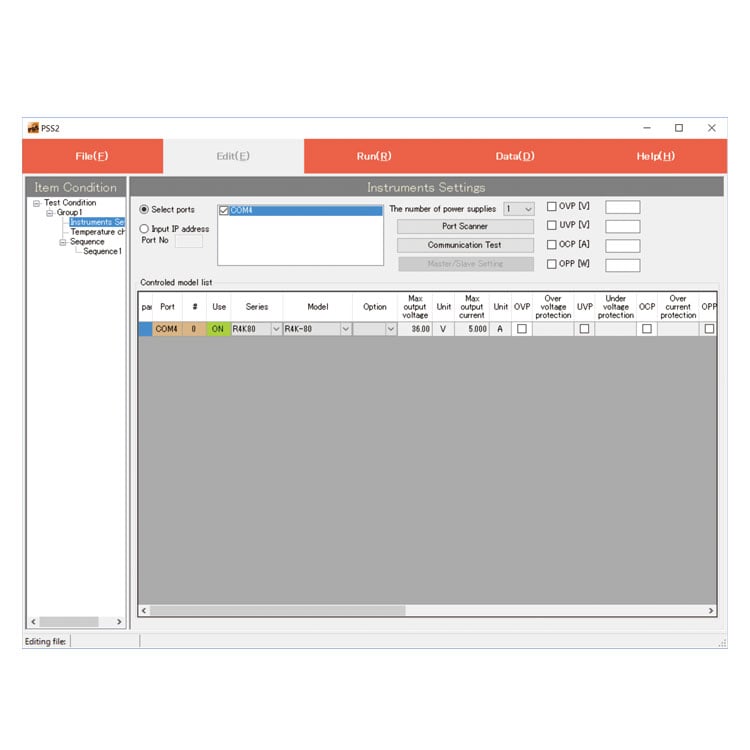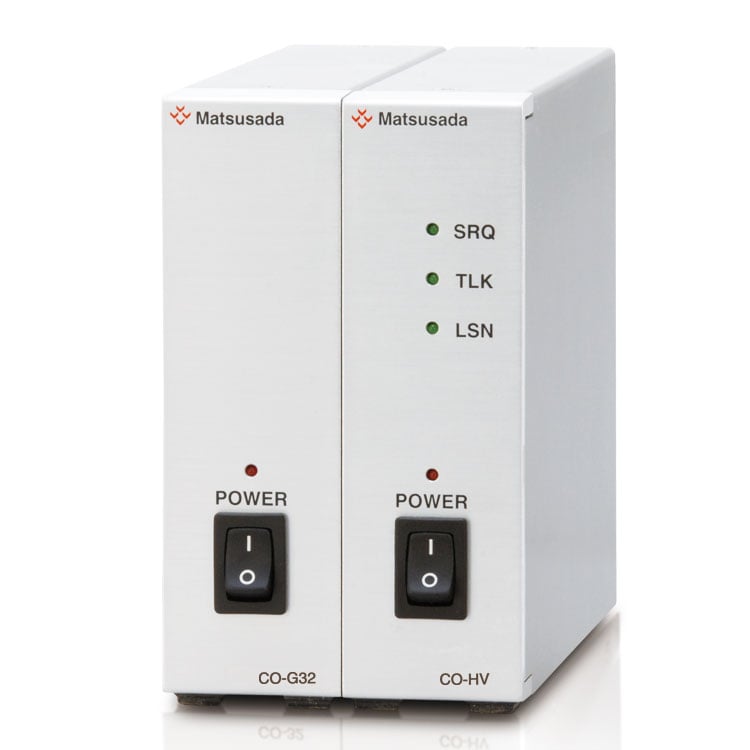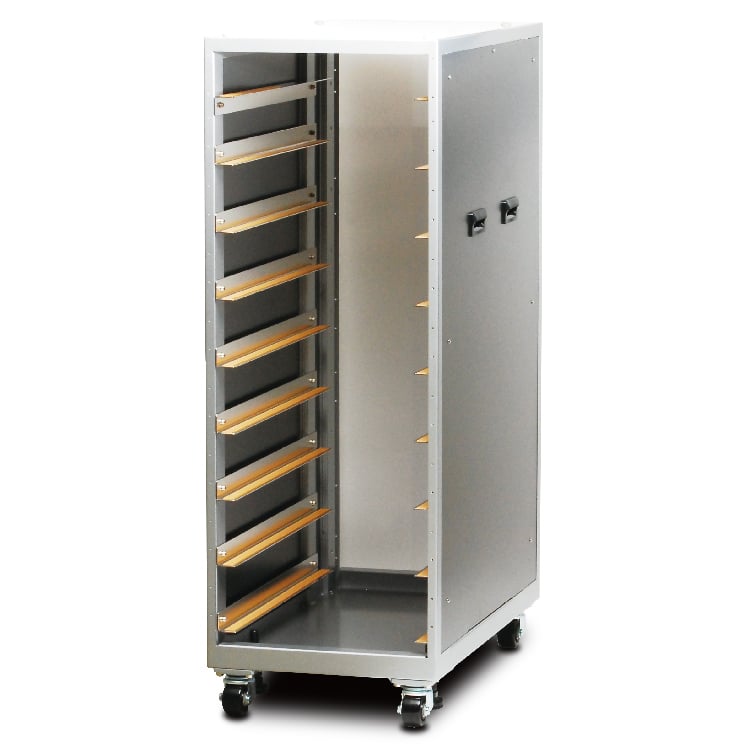HIGH POWER DC ELECTRONIC LOAD
- Rated Voltage: 150 V
- Rated Current: 480 A
- Rated Power: 2400 W
- Multiple operating mode
Space-saving, high-power (2400W in 3U)
EW series is a DC electronic load in space-saving. The DC load offers four operating modes: CC, CR, CP, and CV. Switching mode and VI mode are available.
FEATURES AND BENEFITS
- Four operating modes: Constant Current (CC), Constant Resistance (CR), Constant Power (CP), Constant Voltage (CV)
- Multi item displays of current, voltage, and power on the large LCD screen
- Greater load power and less space
- Wide variety of testing applications with the switching mode and programmable function
- Expandable up to five units (12 kW) with booster
MAIN APPLICATIONS
- Evaluation of switching power supply
- For the absorption of surge current flowing into brushless DC motor
- Evaluation of DC relay and DC switches
- Evaluation of in-vehicle DC/DC converter
- Discharge test of a high current rechargeable battery and Electric double-layer capacitor
- I-V characteristic test of solar cells
Models
| Models | Rated voltage | Rated current | Rated power |
|---|---|---|---|
| EW150V-2400W | 150 V | 480 A | 2400 W |
| Models | Rated voltage | Rated current | Rated power |
|---|---|---|---|
| EW150V-2400WB | 150 V | 480 A | 2400 W |
* Independent operation of booster is not allowed.
Functions
1.6 times more load power than conventional models
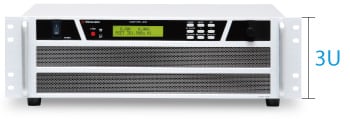
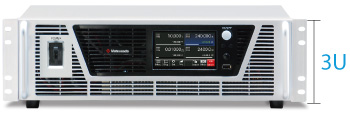
Four multiple operating modes
Constant Current (CC) Discharge
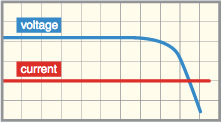
A set current is discharged. Even if the terminal voltage changes during discharge, a constant current can flow.
Constant Resistance (CR) Discharge
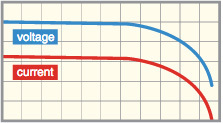
A set resistance is used to discharge. The discharge current value is determined according to the set value by measuring the terminal voltage value.
Constant Power (CP) Discharge
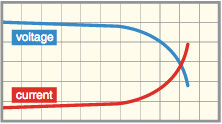
A set power value is used to discharge. If the terminal voltage changes during discharge, a certain amount of power can be consumed according to the change.
Constant Voltage (CV) Discharge
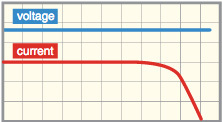
A set voltage value is used to discharge. Even if the terminal current changes during discharge, it can be operated at a constant voltage.
Auto switching between operating modes
With the auto-switching, the operating mode where the load current is minimized is automatically set in response to the set value. The individual function of CC+CV mode, CR+CV mode, and CP+CV mode using the auto-switching remains as it is.

Switching mode
The mode enables to switch periodically between two values.
It is available for CC mode, CR mode, CP mode, and CV mode.
- Slew rate (in CC mode, Range H)
30 A/μs to 1 mA/μs
Setting resolution 1 mA/μs - Frequency
0.1 Hz to 20 kHz Setting resolution 0.1 Hz - Duty cycle
0 to 100% Setting resolution 0.1%
* at 10 V or more and at 100 A or more, with no voltage drop due to wiring

Sequence function
- Current/Voltage/Power/Resistance setting the value of each program
(Available for the mode where the load current is minimized) - Step setting time 10 us to 1000 h
- The setting is available for up to 1,024 steps of 10 programs.
- Repetition frequency: infinite, or 1 time to 10000 times
The sequence function offers a set of step time, amplitude, ramp, and along with the end of the sequence, so you can create programs on the front panel.
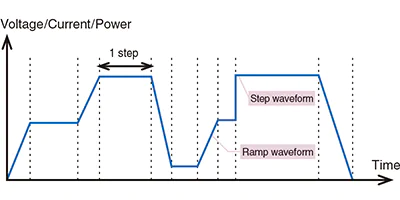
VI Curve mode
It is possible to register up to 128 by combining the voltage value with the current one. The mode provides a simulation of loads such as laser diodes and LEDs which have non-linear resistance characteristics.
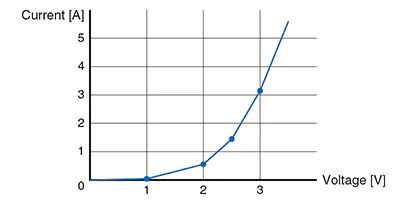
Short circuit mode
Easily transfers to a low impedance state.
- CC/CP mode: Maximum
- CR mode: Maximum conductance

The function of total current and power calculation
Displays the Elapsed Time of load-on and total current, total power.
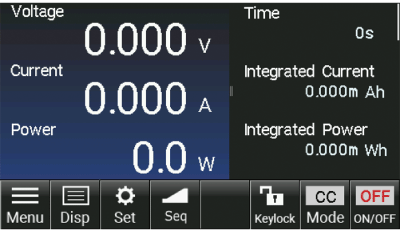
Soft start/stop
Allows slow rise/fall of the current at load-on/off. It is desirable to match the ride time on the power supply to reduce the occurrence of the current overshoot.
- Time: 10 μs to 500 ms
- Rising waveform: linear/saturation curve
- Minimum operating voltage: 0.05 V
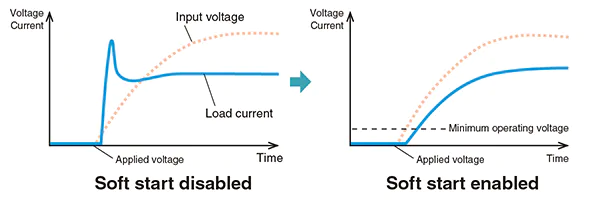
Timer setting
Available the time settings that automatically turn the load off in a certain period from the load on.
- Setting time: 1 second to 10000 hours
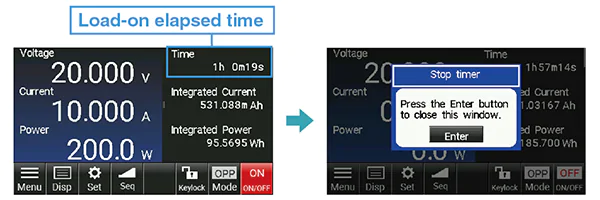
Input/Output of sequence program
Reads and writes sequence programs using USB memory.
Spreadsheet software is available for files in CSV format.
Data logging function
Recoeds the measurement values of current and voltage with USB memory at regular intervals.
- Interval: 0.1 s to 300 s

Parallel operation mode
Up to five EW series electronic loads can be combined to operate as a single device.
The primary unit shows the summed set value and the monitored value.
The power can be increased to 12 kW by combining four boosters with EW150V-2400W.
EW-MS cables or commercially available LAN cables can be used for the connection.
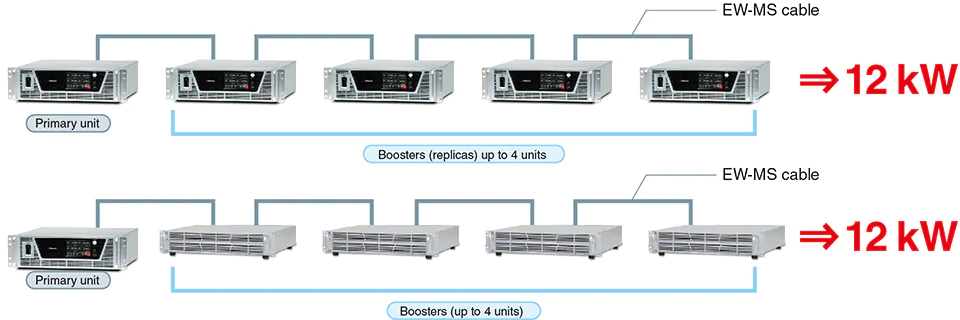
Specifications
Options
- -LGob
-
Optical Interface Board
Isolation control is performed by optical communication. As complete isolation is performed by means of optical fiber, this enables advanced prevention of erroneous operations comprising transient phenomena resulting from surges, inductive lightning, external noise, etc.
(The standard interface is not included in the option.)- -LGob: Optical interface board + optical cable 2 meters
- -LGob(Fc5): Optical interface board + optical cable 5 meters
- -LGob(Fc10): Optical interface board + optical cable 10 meters
- -LGob(Fc20): Optical interface board + optical cable 20 meters
- -LGob(Fc40): Optical interface board + optical cable 40 meters
Select the optional optical interface board (-LGob) when using this DC Electronic Load under the following conditions.
- Noisy environment including factories (Example: motors or coils are used near power supplies and loads).
- Using with high voltage floating (more than 250 V).
- Installation distance of 2 meters or more between this DC Electronic Load and a controller such as a computer, laptop, or Programmable Logic Controller (PLC).
-
Adapters for connecting optical interface board (Sold separately)
To use the optical interface, you need to prepare an optical interface adapter separately. The following interface adapters are available according to the communication method of your controller port.
- CO-E32: Adapter for LAN
- Total 32 units can be connected to one CO-E32.
LAN cable is not provided.
- USB-OPT: Adapter for USB
- Total 32 units can be connected to one USB-OPT.
USB cable is not provided.
- CO-OPT2-9: Adapter for RS-232C (9 pin)
- Total 32 units can be connected to one CO-OPT2-9.
- CO-OPT2-25: Adapter for RS-232C (25 pin)
- Total 32 units can be connected to one CO-OPT2-25.
- CO-OPT4-25: Adapter for RS-485 (25 pin)
- Total 32 units can be connected to one CO-OPT4-25.
- CO-G32: Adapter for GPIB
- Total 32 units can be connected to one CO-G32.
GPIB cable is not provided.
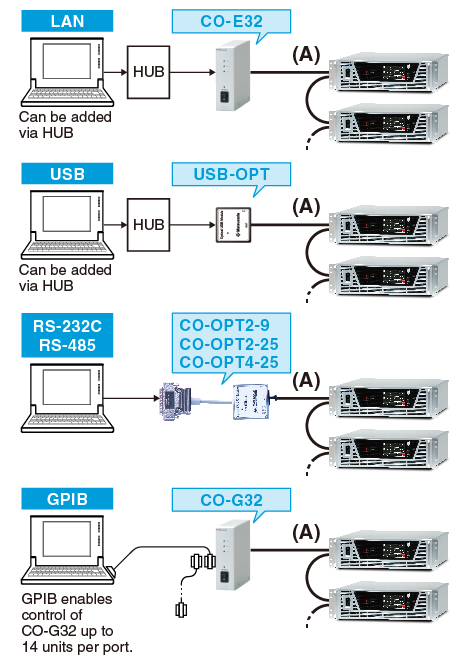
(A) Optical fiber cable
How to Order
When ordering, add Option No. to Model No. in alphabetical order followed by the input voltage.
Example:EW150V-2400W-LGob(Fc20)
Accessories
- EW-MS cable 1 meter
-
Dedicated cable for controlling booster
The cable is used for the primary unit controlling the boosters (replicas).
The cable is required for one booster. You can substitute it with a commercially-available LAN cable.
| Sold separately | CABLE TYPE3 | 250 V / 10 A | 2.5 meters Fixed length |
||
|---|---|---|---|---|---|
| Sold separately | CABLE TYPE4 | 250 V / 10 A | 2.5 meters Fixed length |
How to Order
To order, please specify the model No.
Example: EW-MS cable, CABLE TYPE 3
Application software for power supplies and electronic loads
PSS2en series
PSS2en is the dedicated software which can actuate various power supplies, electronic loads and digital controller for power supplies manufactured by Matsusada Precision Inc. with simple set up.
It is the perfect for the aging test, the burn-in test and the withstand voltage test for electronic parts, and for the endurance test, intermittent/continuous operation test or various simulation test for electric component of automobile.
For details, refer to PSS2en page.

Dimensions
Download
If you are unable to download a file
Please try the following solution.
- Please press Ctrl+F5 to clear the cache of your web browser and try again.
- Please restart your web browser and log in again to try again.
- Please change your web browser to another browser and try again.
- Restart the computer and try again.
- Please try again on a different computer.
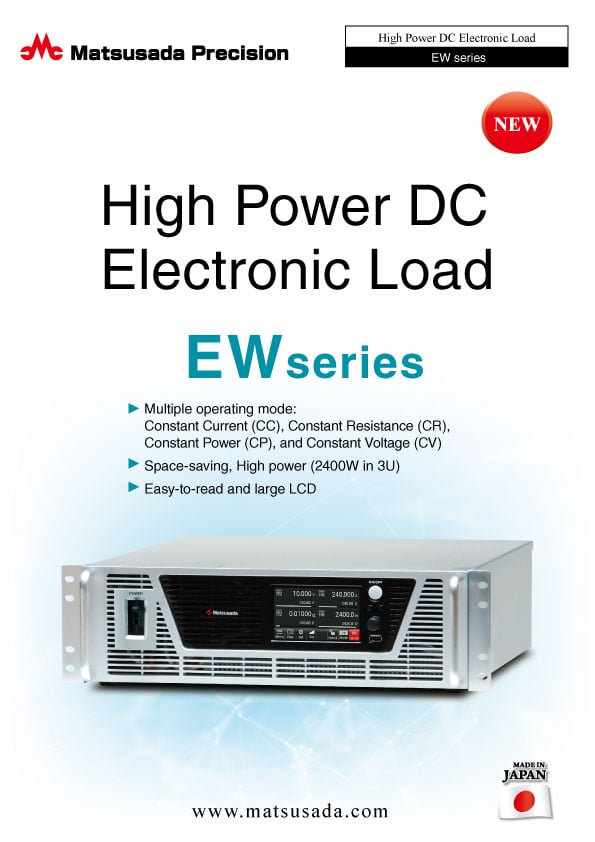
-
EW series Datasheet
Date: 2023-10-10 rev.11
PDF (5,679 KB)
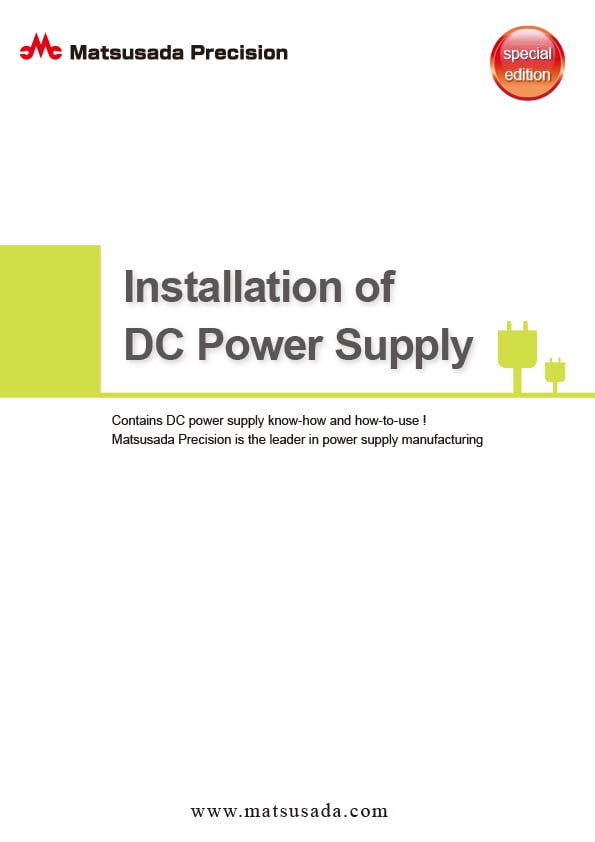
-
How to Use DC Power Supplies
Date: 2024-03-05 rev. 08
PDF (1,467 KB)
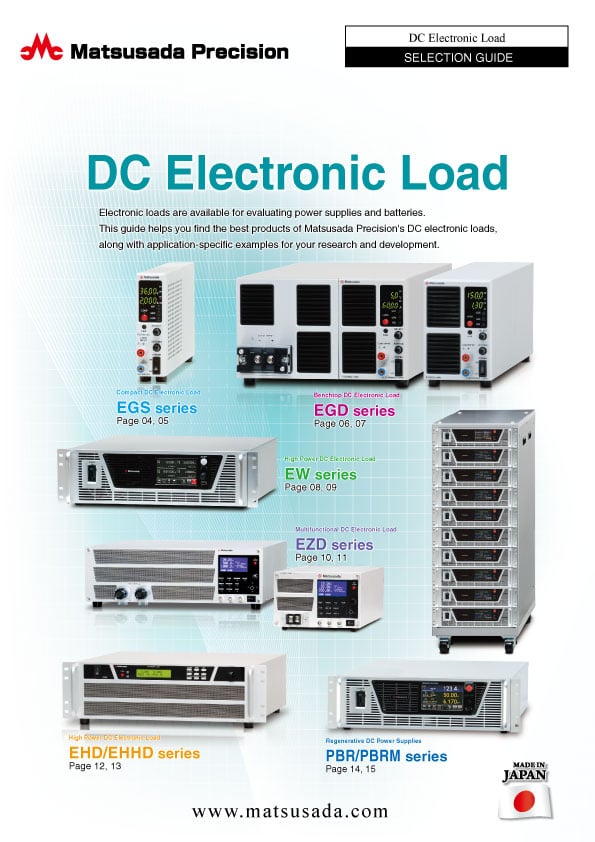
-
DC Electronic Load Selection Guide
Date: 2023-10-31 rev. 03
PDF (6,594 KB)
The account registration is necessary for downloading

-
EW series Datasheet
Date: 2023-10-10 rev.11
PDF (5,679 KB)

-
How to Use DC Power Supplies
Date: 2024-03-05 rev. 08
PDF (1,467 KB)

-
DC Electronic Load Selection Guide
Date: 2023-10-31 rev. 03
PDF (6,594 KB)
In this website, we provide only the latest version of information including instruction manuals as of our products. Therefore, the newest versions of manuals on the website might be not same as the ones of products you purchased in the past.




